The dehydrated fruits and vegetables has many advantages, both tasteful and practical. We explain how to do without a dehydrator and use your oven to dry fruits and vegetables! So, continue reading.
Why Dehydrate Fruits And Vegetables?
- It’s so good. No seriously. Everyone knows dried tomatoes, but wait until you taste a dried banana (not sliced, lengthwise!), and you’ll see that you can really enjoy dehydrating all types of fruits and vegetables.
- They are a very nutritious and qualitative snack. Obviously, you won’t be able to find more vitamins and nutrients than when they are fresh, but dehydrating preserves most of them and makes it easier to eat fruits and vegetables.
- They keep very well. By removing moisture, dehydration allows food to be preserved much longer without additives! This is all the more advantageous in the height of harvest season when your garden produces more than you can (or want!) to eat.
- They are easy to transport. Indeed, once dehydrated, fruits and vegetables are lighter, more flexible and less fragile. They will therefore make a snack that is easy to take away, very healthy and particularly interesting nutritionally. Whether they serve as a snack at work, as a snack during sports, or even when hiking, you can take them everywhere.
- They are easy to use. In addition to being excellent for snacking on their own, they will also be perfect for enhancing your salads, pasta, muesli, and soups.
What Fruits And Vegetables Can Be Dehydrated Without A Dehydrator?
For vegetables, most can be dehydrated. The best known are, of course, tomatoes, mushrooms or beets. But it’s not limited to the classics, and you can very well dehydrate carrots, onions, celery or even seaweed! Although some vegetables have the reputation of being less interesting than others once dehydrated, such as green vegetables (which often need to be blanched beforehand) or celery, nothing prevents you from experimenting!
For fruits, as for vegetables, there are few contraindications. The most commonly dried fruits are:
- Apples
- Pears
- Bananas
- Apricots
- The strawberries
- Grapes
- pineapple
- And many more; the possibilities are endless!
Dehydrating Vegetables in the Oven
- Set your oven to thermostat 2; the temperature inside must be below 65° so as not to cook the food.
- If your oven has it, activate the “natural convection” mode, which will ensure a drying mode closer to a dehydrator.
- Cut the vegetables into pieces or slices. Obviously, avoid too thick pieces (no more than 1cm thick) which would take too long to dry.
- Some vegetables need to be blanched beforehand: mainly carrots and other root vegetables, broccoli, cauliflower or squash.
- Tip: you can dehydrate thawed vegetables! It is not necessary to bleach them.
- Cover a baking sheet with baking paper. If you have a cooling rack with a small enough space to put your vegetables on it, use it! This will dehydrate faster by preventing the accumulation of moisture between the plate and the vegetables.
- Put your vegetables in the middle of the oven and dry them until they are brittle. Monitor regularly, and it will take a few hours (maximum 6 hours generally).
Attention: Leave the oven door open a few centimetres so that the humidity can escape!
How Can You Dry Fruit In The Oven?
Dehydrating fruits in the oven uses more or less the same methodology as vegetables. However, there are some specifics to take into account.
- While this is generally not necessary for vegetables, fruits will be better if peeled. For vegetables, we want a brittle texture, while fruits will be softer. With the skin, they will be less pleasant to consume.
- Do not use overripe fruit. Example: the ideal bananas to be dehydrated are bananas that are still a little green! Dehydrating them will concentrate the taste but also the sugar present in the fruit, so it is not necessary to use very ripe fruits for them to be sweet once dried.
Some dehydration experts use methods to “prepare” certain fruits (apples, pears, peaches, and apricots) before drying them. This helps reduce oxidation, provide brighter colour, reduce nutrient loss and increase shelf life! This process usually involves blanching or marinating the cut fruit in a dilute solution of ascorbic acid (vitamin C!) or citric acid. If you want to try, soak your fruit in a 50/50 mixture of water and lemon juice for 10 minutes before drying.
How to Store Your Dehydrated Fruits and Vegetables?
One of the advantages of dehydrating is that it allows food to be preserved for a relatively long time. The ideal, if you plan to keep them for a very long time, would be to put them in vacuum bags.
However, of course, not everyone has a vacuum sealer, in which case we advise you to keep them in simple, hermetically sealed freezer bags (remember to expel the air when closing).
If you plan to consume them within a few days or even 2/3 weeks, plastic boxes or simple glass jars will do the trick.
Vegetables have a shorter shelf life than fruit.
Dehydrate in the oven vs dehydrator
The dehydrator being a device dedicated to this operation, will have advantages over the oven. First, the dehydrator allows more precise control of temperatures in the ranges used to dry food.
In addition, it will be designed from the factory to wick away moisture and will be more energy efficient.
The oven, on the other hand, will generally allow more food to be dehydrated at once, with dehydrators, on the whole, having smaller capacities. But dehydrating in the oven, above all, offers an excellent alternative to those who do not have space for a dehydrator or do not wish to invest.
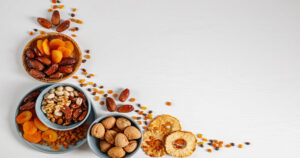
Visit the ADNOOR website for the best golden Sella basmati rice, long-grain rice, brown rice, Super Kernel Basmati Rice, white rice, nuts, seeds, and dried fruits. We take pride in saying that we are the best basmati rice suppliers in Canada and have been the importers, exporters, wholesalers, distributors, and co-packers of various nuts and grains in Canada for the last 25 years. We aim to provide our customers with quality products so they keep trusting us. So without wasting time, visit our website and order what you need.


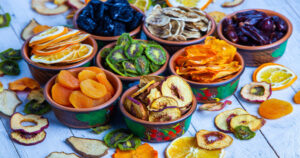


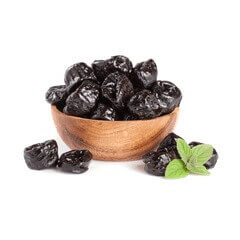
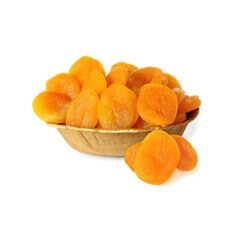
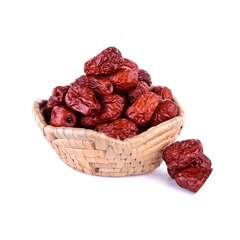
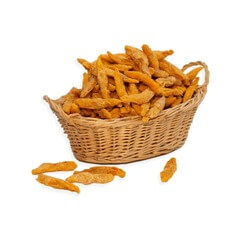
Questions concerning Dried culmination - Adnoor
April 6, 2023[…] Dried Fruits include natural sugar, which is still sugar, and eating too much of it can cause blood sugar levels to surge, leading to cravings or overeating. Moderation is the key to including dried fruits in your weight reduction regimen. It’s critical to maintain track of your calorie consumption and avoid eating too many dried fruits. Dried fruit serving sizes are often significantly smaller than fresh fruit serving sizes, so read the label & measure out your servings accordingly. It is critical to select appropriately dried fruits. Certain dried fruits, such as raisins and prunes, have more calories and sugar than others. Dried fruits, such as apricots, apples, and cranberries, are lower in calories and sugar, providing them with a superior weight-loss option. […]